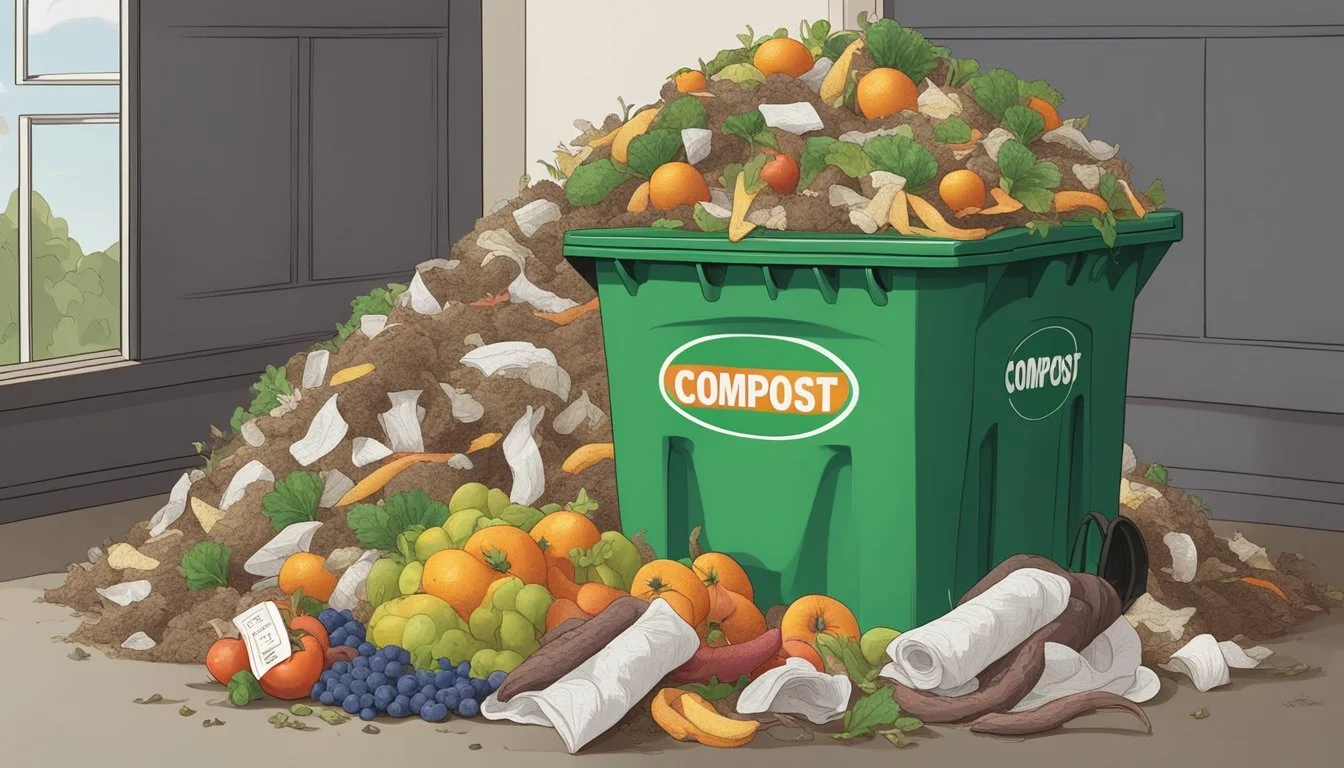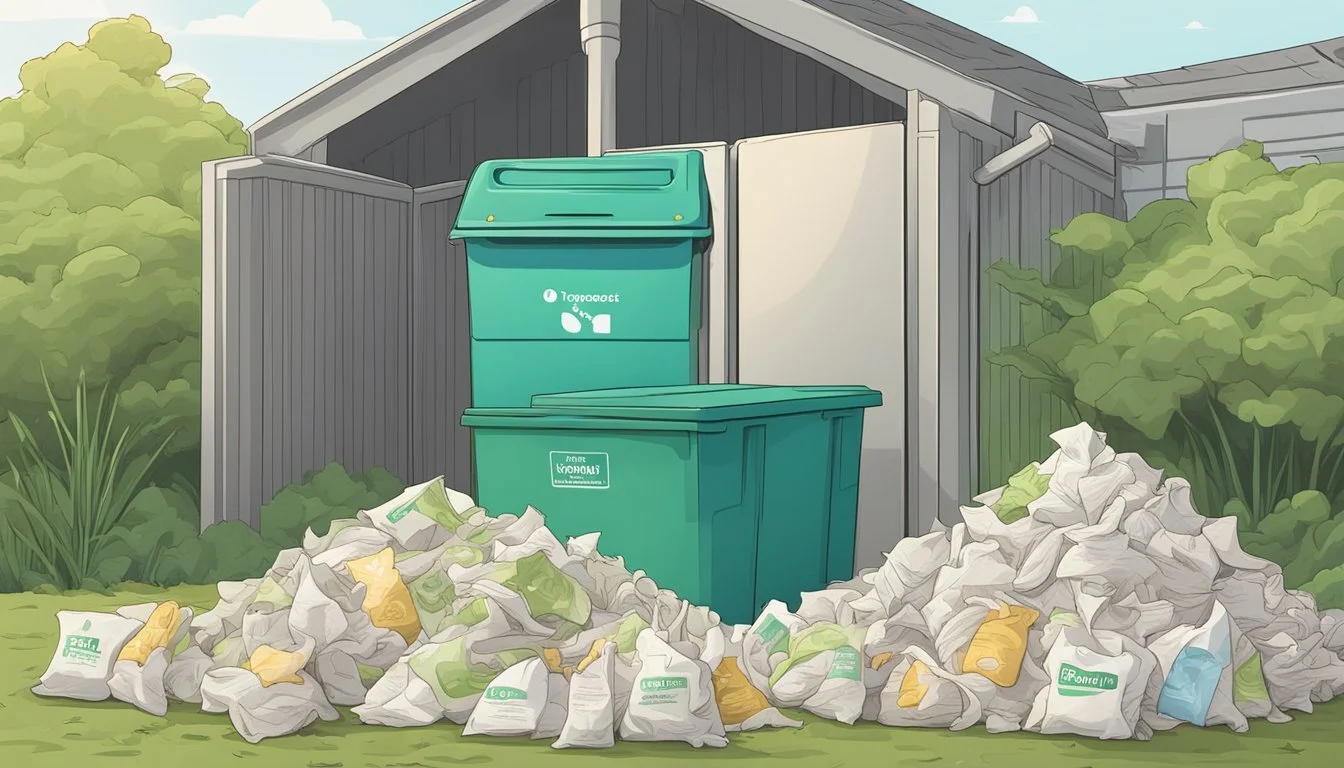Can You Compost Used Tissues?
Understanding Biodegradable Waste Options
Composting offers an environmentally friendly way to deal with organic waste, turning it into valuable fertilizer for gardens and plants. Within this green practice, many everyday items can be composted, including used tissues. These common household items are largely made from biodegradable paper fibers, which break down within compost piles. This process contributes to waste reduction while also creating a nutrient-rich soil amendment.
However, not all used tissues are suitable for composting. Tissues that have been used to clean up chemicals or grease, or those that have been in contact with contagious pathogens, like during a cold or flu, may pose a risk of contaminating the compost pile. In these cases, it's advisable to avoid composting the tissues to prevent the spread of diseases or harmful chemicals into the environment.
When composting tissues, it's important to know the specifics of local composting facilities, as many industrial composters can process tissues contaminated with bodily waste. Individuals should check with their municipality's regulations to ensure compliance with local composting programs. Overall, composting used tissues can be a viable practice, provided they're free from harmful contaminants and align with local guidelines.
Understanding Composting Basics
Before diving into the intricacies of composting used tissues, it is essential to familiarize oneself with the core principles of composting and its environmental impact. This section aims to elucidate what composting entails and highlight the substantial benefits it delivers.
What Is Composting?
Composting is a natural process where organic matter is broken down by microorganisms in the presence of oxygen to create compost. This decomposition transforms discarded materials such as leaves, vegetable scraps, and certain paper products into a nutrient-rich soil amendment. Compost serves as a sustainable resource to enrich garden soil, enhancing its structure, water retention, and fostering plant growth. The ratio of carbon to nitrogen in the materials is critical in this process:
Carbon-rich elements, or "browns," provide energy for microorganisms and include materials like dry leaves and paper.
Nitrogen-rich materials, or "greens," supply proteins and include items such as food scraps and lawn clippings.
Benefits of Composting
Composting offers manifold environmental benefits. By converting organic materials into useful compost, it significantly reduces the amount of waste sent to landfills, thus lowering methane emissions, a potent greenhouse gas. Furthermore, it recycles nutrients back into the ecosystem, creating an eco-friendly cycle of growth and decomposition. Using compost in gardens and farms can diminish the need for chemical fertilizers, offering a natural alternative that promotes healthier soil and plant life.
The Science of Composting Tissues
Within the realm of composting, the integration of used tissues can be a nuanced topic. It revolves around the principles of decomposition and the conditions that facilitate or hinder this natural process in a compost setting.
Can Tissues Be Composted?
Tissues can be composted because they are made from paper fibers that are biodegradable. When added to a compost bin, they break down due to the action of microorganisms. The tissues serve as a source of carbon, an essential element that works in tandem with nitrogen to create a balanced compost environment.
Factors Affecting Tissue Decomposition
Several variables affect the rate at which tissues decompose in a compost pile:
Microbial activity: The presence of bacteria and other microorganisms dictates the rate of decomposition. Adequate moisture and temperature foster a thriving microbial ecosystem.
Tissue treatment: Tissues that have been used to clean up grease, chemicals, or contain harmful pathogens—like those from a cold or flu—should not be composted to prevent contamination of the compost and the spreading of diseases.
Composting conditions: A proper balance between green (nitrogen-rich) and brown (carbon-rich) materials is necessary. Tissues are considered 'brown' and contribute carbon.
Compost accelerators: Addition of compost accelerators can hasten the breakdown of tissues.
When tissues are composted properly, they can decompose in a matter of weeks. Ripping the tissues into smaller pieces before adding them to the pile can further expedite this process, as it increases the surface area for microorganisms to work on.
Safe Composting Practices
When composting used tissues, one must consider the importance of preventing pathogen spread and ensuring the compost pile does not become contaminated. The process should be managed to provide optimal conditions for decomposition while excluding materials that can compromise the compost's integrity.
Avoiding Pathogens and Contamination
To maintain a safe compost bin, one should not compost tissues that have been used to clean up chemicals, or that have been in contact with flu, viruses, or other pathogens. Tissues contaminated with these substances can introduce harmful bacteria and germs, leading to potential health risks and disease transmission.
Yes to plain tissues (no visible contamination)
No to tissues with:
Chemical residues
Bodily fluids containing pathogens
Creating the Right Composting Conditions
For a compost pile to efficiently break down materials, it must have the right balance of green (nitrogen-rich) and brown (carbon-rich) materials, adequate moisture, and sufficient aeration. These conditions foster the growth of beneficial microorganisms that help decompose organic matter without nurturing harmful bacteria or viruses.
Balanced Compost Pile Includes:
A mix of green materials like vegetable scraps
Brown materials like dried leaves
Regular turning for oxygen
Moisture akin to a wrung-out sponge
Materials to Exclude from Your Compost
Certain items should never be placed in a compost bin because they can create an environment that is conducive to contamination and can attract pests or lead to the growth of undesirable microorganisms.
Do Not Compost:
Meat or dairy products
Fats and oils
Diseased plants
Pet wastes (from carnivores)
Alternatives to Composting Tissues
While tissues can be composted under certain conditions, alternatives exist for those tissues deemed non-compostable due to contamination with chemicals, grease, or pathogens.
Consider Using Bokashi for Non-Compostable Tissues
Bokashi composting offers a unique solution for used tissues that are not suitable for traditional composting. This method employs a fermentation process, using a bokashi compost accelerator, typically composed of bokashi bran, which is infused with effective microorganisms. When added to a bokashi bin with non-compostable tissues, the accelerator initiates a fermentation process rather than decomposition. The acidic environment within the bokashi bin can effectively break down materials like tissues, even when they contain traces of dairy or meat which are typically avoided in conventional composting systems.
Common Misconceptions about Composting Tissues
The concept of composting tissues often comes with misunderstandings. A prevalent misconception is that all types of tissues are automatically compostable. In reality, tissues contaminated with synthetic materials, or that have been used to clean up plastic particles, chemicals, or heavy metals should not be treated as compostable. These contaminants can persist in the compost and ultimately harm the soil and plant life. Therefore, recognition of what can and cannot be composted is crucial for a successful and environmentally friendly composting practice.
Application of Composted Materials
Composted materials serve as a valuable asset for soil enrichment, promoting sustainable practices in gardening and contributing to environmental benefits. This section explores the specific applications in the garden and the overarching environmental advantages.
In the Garden
Compost adds vital organic matter to the garden soil, which enhances its structure and fertility. When incorporated into the soil, compost:
Improves aeration and water retention capabilities.
Boosts the population of beneficial microorganisms.
Provides a slow-release source of nutrients, which is vital for developing a nutrient-rich soil.
Gardeners often apply compost to their soil before planting, which helps to fertilize and prepare the beds for new growth. It can be used as a top dressing for established plants or mixed into the soil when introducing new plants to the garden.
Environmental Benefits
Composting and using composted materials is inherently eco-friendly. It promotes a sustainable cycle that benefits the environment by:
Reducing the amount of yard waste and organic matter that ends up in landfills.
Lowering methane emissions from landfill sites, as decomposing organic matter in anaerobic conditions is a significant source of this potent greenhouse gas.
Conserving water by improving soil structure, which increases water retention.
Decreasing the need for chemical fertilizers, which are energy-intensive to produce and can cause harm to the ecosystem.
The use of compost is a simple yet effective strategy to enrich garden soil and contribute positively to environmental health.
Frequently Asked Questions
In managing waste responsibly, understanding the proper disposal methods for common items like used tissues is crucial. This FAQ section addresses key concerns about composting tissues, disposing of those used during illness, and alternatives if composting is not an option.
How to Dispose of Tissues Properly?
Used tissues should be composted when possible to reduce landfill waste. Tissues are primarily paper fibers and are biodegradable. They should be torn into smaller pieces before adding to a compost bin to facilitate breakdown and prevent clumping.
Can I Compost Cold and Flu Tissues?
While tissues are compostable, those used during a cold or flu should not be added to a compost bin. They may contain pathogens that could spread disease. Instead, dispose of these tissues in a waste bin with a liner to prevent contamination.
What are the Alternatives to Composting Facial Tissues?
If composting is not possible, especially for tissues used during illness, an environmentally friendly alternative is placing them in a lined waste bin. Alternately, consider using recyclable or reusable options like handkerchiefs for a more sustainable practice.






